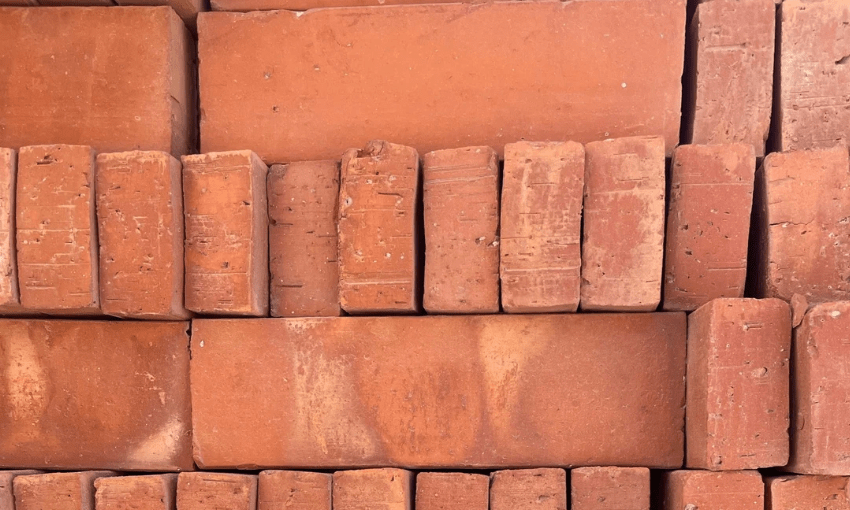What is Terracotta Tile Made of?

The short answer:
Terracotta tile is made of an iron rich earthenware clay. Unglazed terracotta tiles can range from yellow, to orangish to pink or red hues depending on the iron content found in the clay and oxidation that happens in the firing process.
Terracotta tile can be used and installed in many applications. Glazed terracotta tiles may be used in frequently wet areas, provided the proper waterproofing is made in the application area.
It is best not to use terracotta tile in freeze/thaw climates due to the porous nature of terracotta clay. Water can soak into the clay and expand when frozen; thus degrading the integrity of the tile and eventually permanently damaging or cracking the tile.
The long answer:
The word “terracotta” comes from Latin and is two words combined. “Terra,” meaning “Earth.” And “Cotta,” meaning “baked” or “cooked.”
Terracotta is an ancient material used across many cultures – The Romans and Chinese being two of the best known cultures for using the material. In the ancient world, terracotta has been used as building bricks, road pavers, flooring or wall tile, pots, statues, oil lamps, roofs, and many more applications.
In modern times, terracotta is still used in many of the same applications as ancient cultures used terracotta. Today, the most common use for terracotta is pots or planters. It is also used in structural materials – specifically as the exterior surface to buildings or in wall or flooring applications.
In some cases, “terracotta” can generally refer to clay based materials that aren’t made on a potter’s wheel. However, in most cases, terracotta refers to an iron rich clay, reddish in color, that has yellow, orange, pink, or red hues after it’s fired in a kiln. Terracotta clay can be found all over the world.
The color variation of terracotta largely depends on the iron content found in the clay. The redder the clay, the higher the iron content. The more yellow the clay, the less iron content. The method used for baking or firing the clay can also impact the coloration of baked terracotta clay.
Due to the oxidation that happens in the firing process of iron and other materials found in or on terracotta clay – different colors may appear on terracotta after it has been fired, ranging in shades/colors. Various colors of terracotta are more likely to happen in wood fired kilns, where firing temperatures are harder to control and produce more uneven heat within the kiln. Ash or soot or other debris are also more likely to be found circulating in wood fired kilns than a gas kiln. This debris, combined with the iron rich content in terracotta, will oxidize and create varied colors on the terracotta clay surface.
Gas kilns are more commonly used to bake or fire terracotta today. This is due to the fact gas kilns are easier to control. Firing terracotta in a gas kiln is less likely to impact that color of terracotta because gas kilns typically produce more even heat and they also burn cleaner with little to no debris or burnoff in the kiln.





